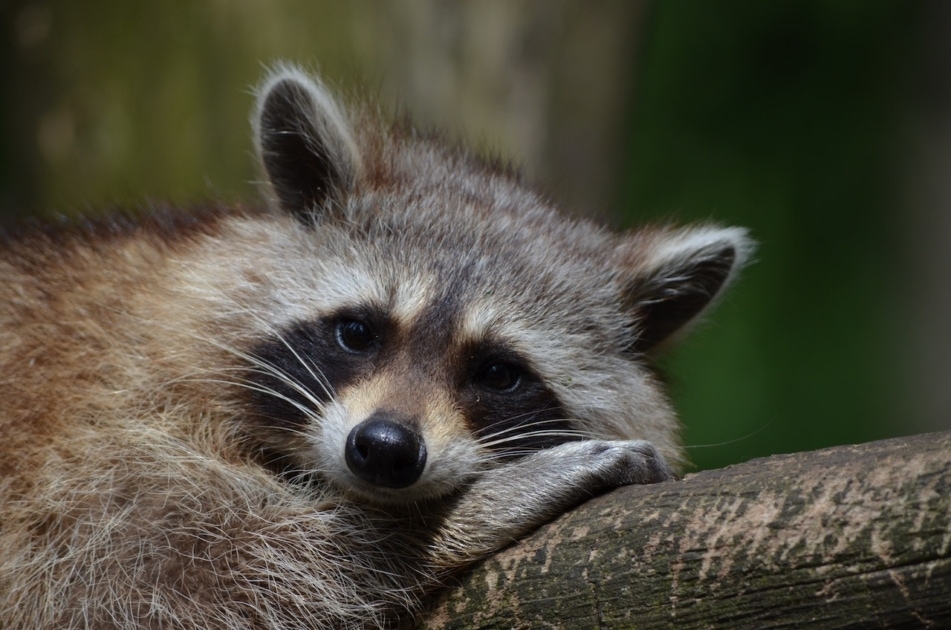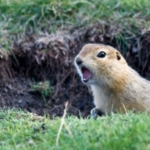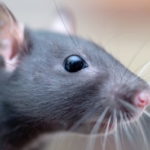Garden and Household Pests: Raccoons
Practical strategies for keeping raccoons from wreaking havoc in your home or garden.

Wild animals are part of what makes nature so magical, and watching them can be highly enjoyable. While it’s important to coexist with animals in relative peace, they can cause countless problems when they take up residence in our homes or gardens. In this series, our Wildlife Management Specialist, Shawn Weeks, will educate us about some common household pests, and share some strategies for keeping them under control without dangerous chemicals or poisons.
Todat we’ll look at Procyon lotor, better known as the North American raccoon.
Habitat and History
Raccoons can be found throughout the United States, Mexico, and Central America, as well as southern Canada. A medium sized mammal, raccoons typically weigh between 10 and 30 pounds, with the males usually being larger than females. They are easily identified by the black rings around their eyes and tails. They have long pointed noses and short pointed ears, and their fur is colored grayish brown.
Raccoons thrive in woodland areas with streams and wetlands. They also do well on farmlands. They are very adaptable and can thrive within and around human populations. They are considered true New World animals, closely related to dogs and bears. Raccoons have well-developed senses of touch, sight, and hearing, and are excellent climbers. They are extremely strong for their relatively small size.
Though primarily nocturnal, they may be seen during the day, depending on factors such as competition for food and population.
Diet
Raccoons are omnivores. Their diet consists mostly of fruits, mast (such as acorns), crayfish, insects, rodents, fish, young rabbits, turtles, carrion, garbage, birds, and eggs. They love crops such as corn and grapes. Raccoons are opportunists. There isn’t much that they won’t eat.
Reproduction
Raccoons breed in late winter or early spring, depending on how far north or south they are. They have one litter a year with an average of four cubs. The gestation period for raccoons is 63 days. The cubs are born blind and helpless, and have a light fur. After anywhere from one to two months, the cubs are weaned and will travel short distances with their mother to search for food. After three to four months, they will start to forage on their own and begin to disperse. They may stay with their mother through the first winter.
Problems, Solutions and Health Concerns
Raccoons have an excellent ability to adapt, and to co-exist with humans. These two factors make them a possible nuisance and health concern.
Raccoons can, and will, eat pet food and livestock feed. If you have pets or livestock, keep your feed and grain in sealed containers, and never leave them outside. You should also keep stalls, chicken pens, and rabbit hutches cleaned, secure and functional at all times. Of course this is also a must for the health of your livestock and pets. Keep bird feeders away from trees or structures that raccoons can climb.
Keep your trees trimmed and away from your house and/or barn. Raccoons can easily climb trees to access your roof and soffits. Keep you roof free of debris, and regularly check your eves, soffits and, overhangs for rot or water damage. Preventing water damage of eves by keeping your gutters cleaned. If rainwater can’t flow, it will back up and damage the area. If these areas rot and decay, it will leave them vulnerable. Raccoons will exploit weak areas and take up residence, especially in your soffits.
You must also keep your chimney cleaned and have a chimney cap installed. Raccoons can climb in and out of your chimney with ease, and may even build a home in there. Female raccoons have been known to have their young inside chimneys. If a female has had her litter in your chimney, do not put a cap on until the female and all her young are out.
Remember, also, to keep the lids on your garbage cans secure. It’s a good idea to keep the cans in a wooden bin, or in the garage. This will keep the odors down, and won’t be an attractant for raccoons.
Electric fencing can help keep raccoons out of your garden. When installing an electric fence, make sure the wires are installed close together and close to the ground. Electric fencing is not 100% effective, but it can help.
Rabies is a major health concern when dealing with raccoons. Some symptoms of rabies include unprovoked aggression, lack of coordination, fearlessness toward humans, excess salivation, and disorientation. Because raccoons are nocturnal, daytime activity may also indicate rabidity. If you come in contact with a sick animal, never approach it. Call the authorities.
Raccoons are a smart, strong, agile, and persistent mammal, and you should never provoke or try to engage one. If you follow the above recommendations for keeping your property clean, uncluttered, and well maintained, chances are you won’t have many run-ins with one. If you are having a problem with raccoons that these strategies don’t solve, contact your state wildlife agency, or email me at [email protected] for advice.

Shawn Weeks
Shawn is a lifelong New Englander. He lives in Canton, Conn., with his wife Tami, mother, sister, and her three children. He and his wife have two grown children and two grandchildren. Shawn is an avid hunter, fisherman, and gardener. He is also a writer, a nuisance wildlife professional, small scale farmer, and scout leader. You can email him at [email protected].





